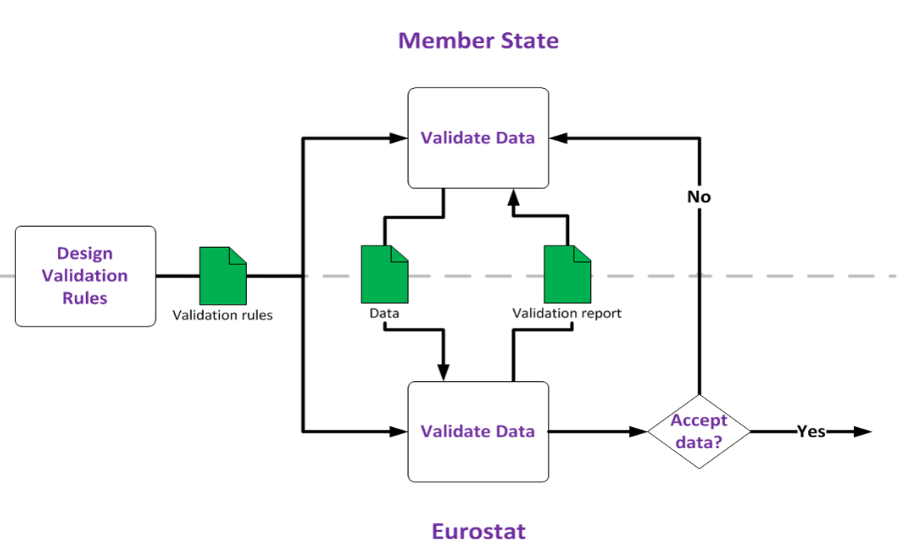In the target business process, validation rules are jointly designed and agreed upon at the level of each statistical domain’s working group. The resulting validation rules are documented using common cross-domain standards, with clear validation responsibilities assigned to the different groups participating in the production process of European statistics.

The use of common standards for validation rules and validation reports, combined with the common ESS guidelines for IT services being developed by the ESS Vision 2020 SERV project, will enable shareable ESS services to be created for validation. Member States will be able to use them on a voluntary basis to validate the data to be sent to Eurostat.
The target business process for validation in the ESS comprises the following process steps:
1. Design data structures: Eurostat and Member States jointly define, at Working Group level, the structure and format of the data to be sent by Member States to Eurostat. The data structure is documented using accepted metadata standards.
2. Design validation rules: Once the data structure is agreed upon, Eurostat and Member States jointly define, at Working Group level, the validation rules which must be applied to the data. Eurostat and Member States assign a severity level to each validation rule and determine which organisation is responsible for applying it. The validation rules are documented using a common ESS standard.
3. Validate data: Prior to sending the data to Eurostat, Member States apply the validation rules they are responsible for. When Eurostat receives the data, it verifies that Member States have discharged their validation duties as expected and applies the validation rules under its own responsibility. The outcome of Eurostat's validation procedure is a validation report which is sent back to the Member States. This validation report follows a standard structure.
4. Accept data: Based on the validation report produced by the validation procedures, Eurostat determines whether the data can be accepted or not. This acceptance procedure follows a standard and agreed upon process. If the data are accepted, the validation business process ends. If the data are not accepted, a request for clarification or for resubmission of the data is sent to the Member State.
Please consult more detailed description of these business functions in the target process for the ESS.
